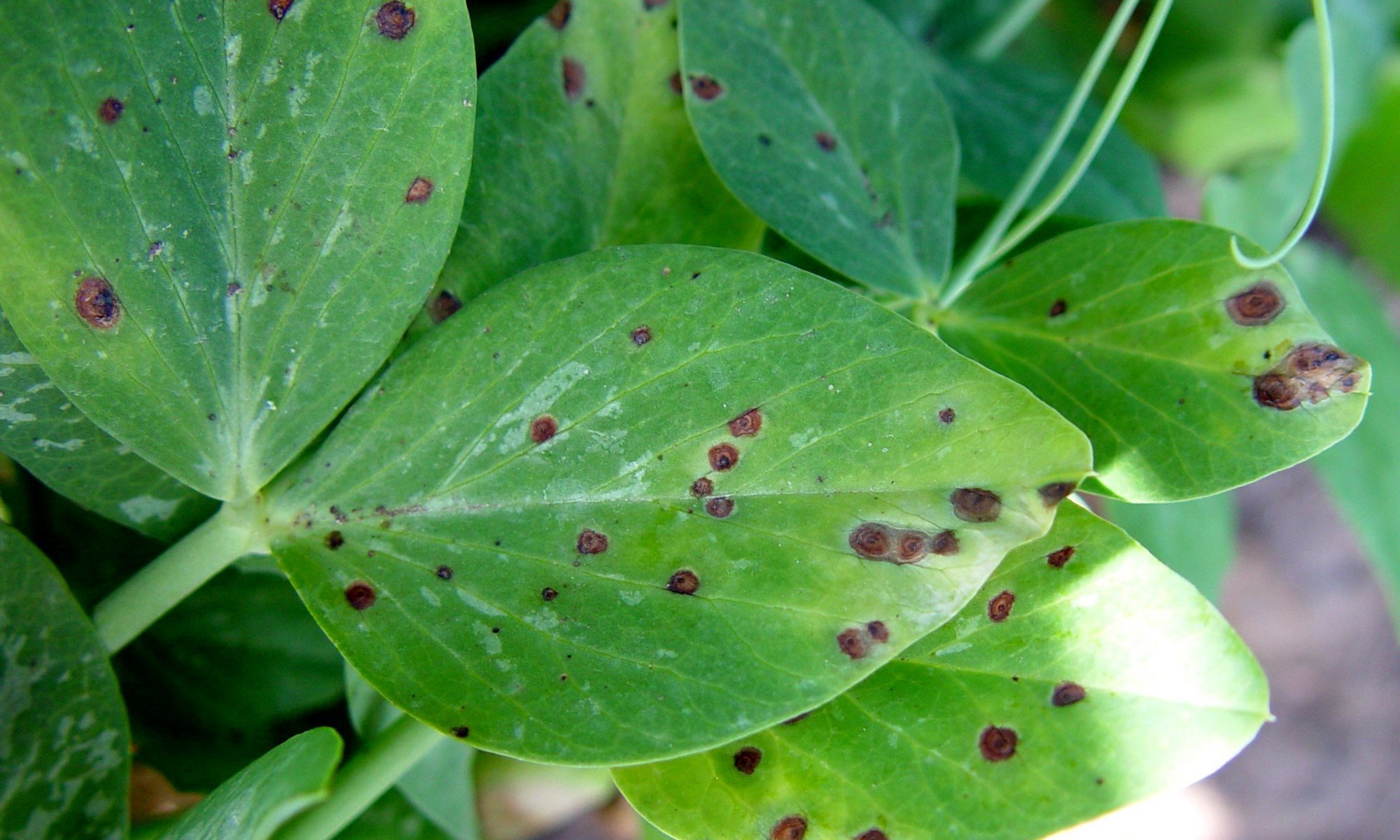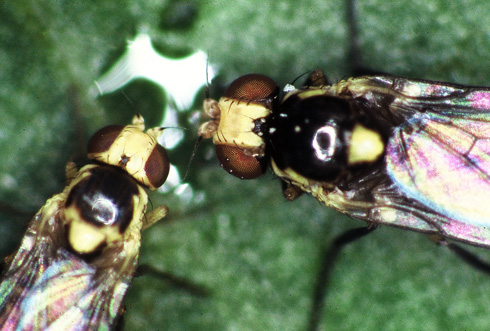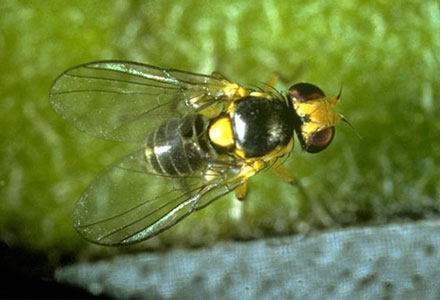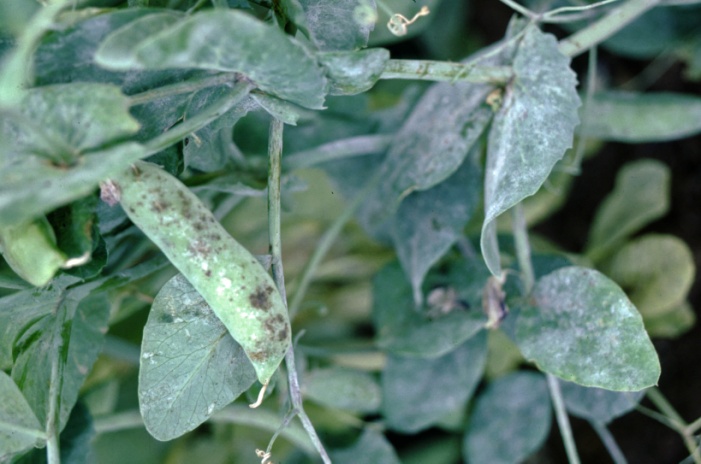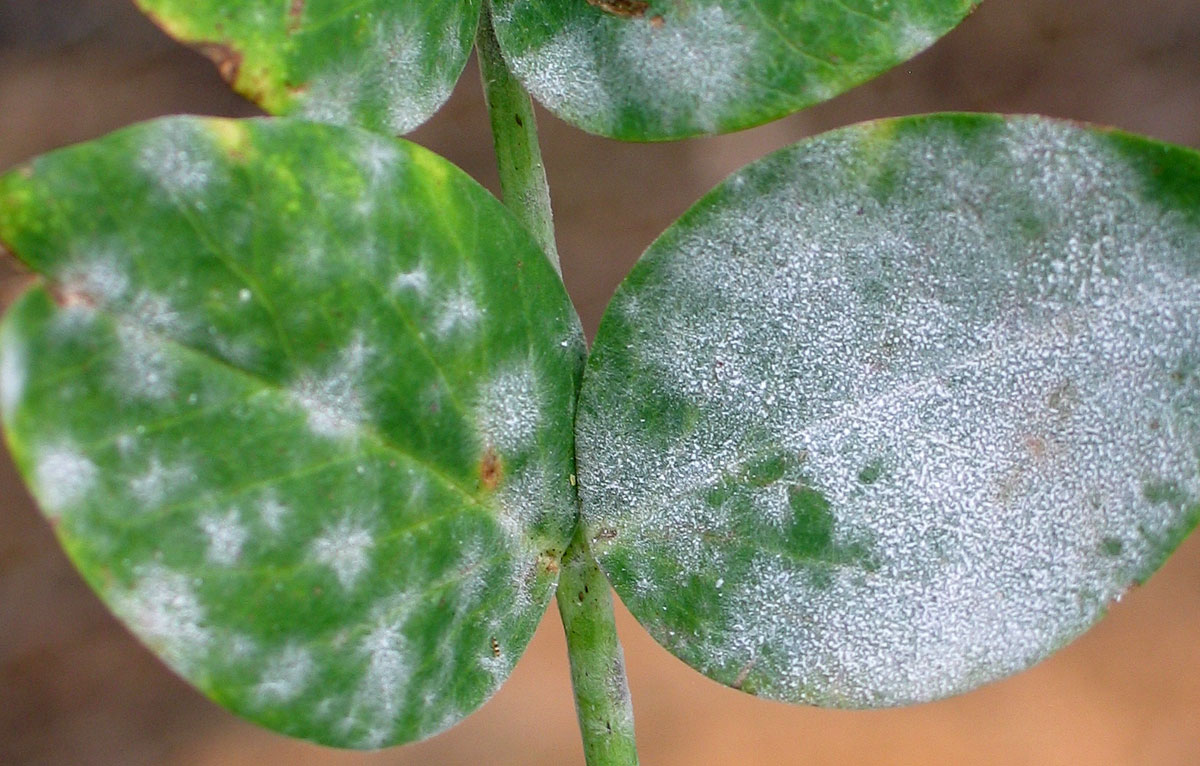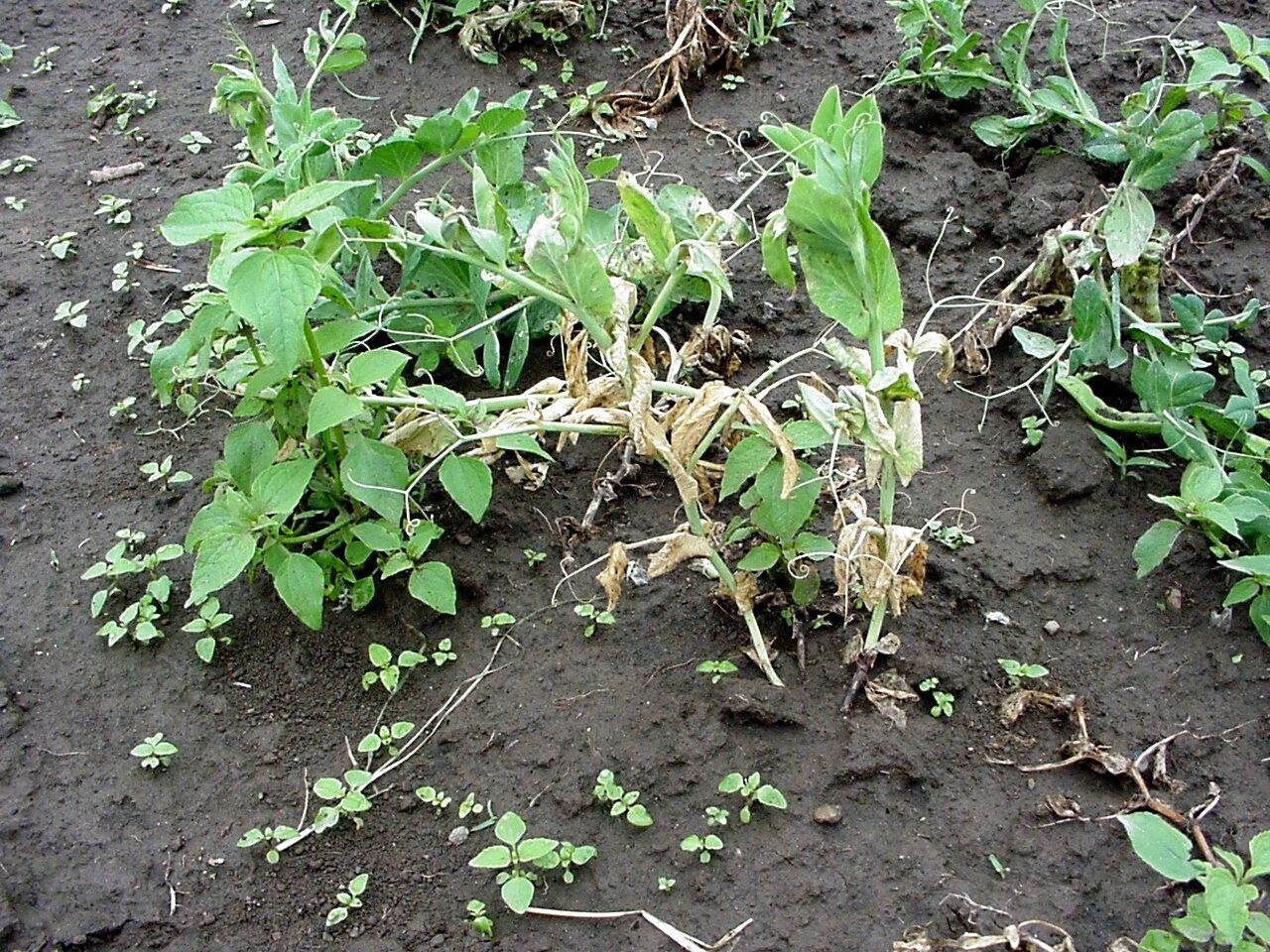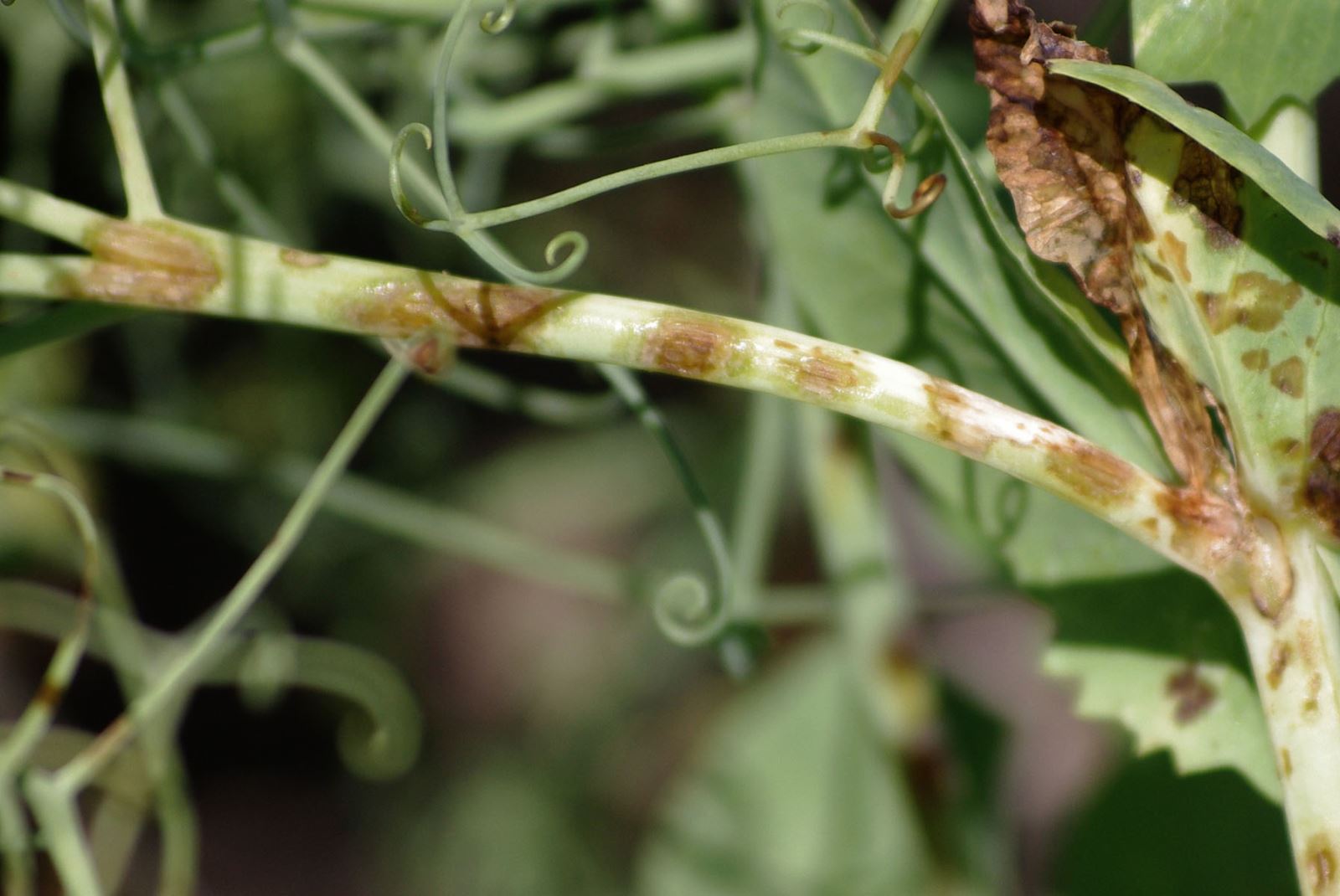- Use healthy seeds and treat them with Carbendazim 2.5 g/kg seed before sowing.
- Spray infected crop with Carbendazim 12 % + Mancozeb 63 % @ 300 g/acre or
- Chlorothrlonil 75% WP @ 250g/acre or
- kitazin 48.0 w/w @ 400 ml / acre.
- Remove diseased plants and destroy them.
- Maintain proper drainage.
Ascochyta foot rot and blight in pea
Ascochyta foot rot and blight in pea
- Small, purple spots appear on leaves which may enlarge, turn brown and become zonate with a definite margin.
- Similar lesions also appear on the stem which elongate and coalesce causing browning or blackening of the stem.
- On the pods, lesions are tan or brown in colour and irregular having a dark margin.
Control of leaf miner in pea
- Spraying of systemic insecticide like
- Deltamethrin 2.8% EC @ 200 ml/acre or
- Triazophos 40% EC @ 350-500 ml/acre. Or
- Chlorpyrifos 20%EC @ 500 ml/acre or
- Cartap Hydrochloride 50 % SP @ 250 gm/ acre are recommended.
Like and share with other farmers by clicking on the button below
ShareLeaf miner in pea
- Adults are dark metallic green in color.
- Pea leaves are attacked by Maggots which makes prominent whitish zigzag lines in the leaves.
- The growth is stunted. The flowering and fruiting capacity of infested plants is adversely affected.
Like and share with other farmers by clicking on the button below
SharePowdery Mildew of Pea
Symptoms-
- Firstly on old leaves and then other parts.
- Formation of powder on both surfaces of leaves.
- The later formation of powdery spots on tendrils, pods, etc. White power on the plant surface. The fruits do not either set or remain very small.
- Later stage, powdery growth also covers the pod making them not suitable for marketing.
Management-
- Avoid late sowing.
- Use resistant varieties like- Arka Ajit, PSM-5, Jawahar Pea- 4 JP-83, JRS-14,
- Foliar spray of wettable sulfur 50% WP @ 3 gm/liter of water or Dinocap 48% EC 2 ml/liter of water three times at 10 days interval.
Like and share with other farmers by clicking on the button below
ShareNutrient Management in Pea
A basal dose of 12 kg N per acre at planting is sufficient for stimulating early growth.
- The higher dose of nitrogen has an adverse effect on nodulation fixation.
- The crop gives a good response to phosphorus application as it favors nitrogen fixation by increasing nodule formation. It also increases the yield and quality of pea.
- Potassic fertilizers also have an effect in increasing the yield and nitrogen fixation ability of the plant.
General Recommendations:
General recommended fertilizer doses depend upon the:
- The fertility of soil and the amount of organic manure applied to the crop.
- Sowing conditions: Whether the field is irrigated or rainfed?
- If the crop is rainfed, doses become just half.
How much to apply?
- 06-08 t/acre of well-decomposed FYM is incorporated into the soil.
- For the better yield in pea use 10 kg Urea, 50 kg DAP, 15 kg MOP and 6 kg Sulphur 90% per acre during the land preparation use the half quantity of urea and the full quantity of remain fertilizer and remaining quantity of urea used in two split doses during the irrigation.
Like and share with other farmers by clicking on the button below.
ShareControl of Aphids in Pea
Control of Aphids in Pea:-
- Small green insects, adults are large pear-shaped green, yellow or pink in color.
Damage:-
- Suck the plant sap from leaves, flowers and pods.
- The affected leaves often get cupped or become irregularly distorted, shoots become stunted and malformed.
- Honeydew secreted by the aphids encourages growth of Sooty mould.
Control:-
- Spray the crop with Following insecticides at 15-20 days interval till the end of aphid population checked.
- Profenofos 50% EC @ 50 ml/ Pump.
- Acetamiprid 20 SP @ 10 gm/Pump.
- Imidacloprid 17.8% SL @ 7 ml/pump.
Like and share with other farmers by clicking on button below
ShareManagement of Powdery mildew in Peas
Powdery Mildew of Pea:-
Symptoms-
- Firstly on old leaves and then others parts.
- Formation of powder on both surface of leaves.
- Later formation of powdery spots on tendrils, pod etc. White power on plant surface. The fruits do not either set or remain very small.
- Later stage, powdery growth also covers the pod making them not suitable for marketing.
Management-
- Avoid late sowing.
- Use resistant varieties like- Arka Ajit, PSM-5, Jawahar Pea- 4 JP-83, JRS-14,
- Foliar spray of wettable sulphur 50% WP @ 3 gm/litre of water or Dinocap 48% EC 2 ml/ litre of water three time at 10 days interval.
Like and share with other farmers by clicking on button below
ShareManagement of Wilt in Pea
Management of Wilt in Pea:-
- The roots turn black and the later rot away.
- Plant growth is checked, foliage turn yellow and downward curling of stipules and leaflets takes place.
- The entire plant wilts and the stem shrivels.
Control:-
- Treat seeds with Carboxin 37.%+ Thiram 37.5% @ 2 gm /kg or Trichoderma viride @ 5 gm/kg before sowing and avoid early sowing in badly infected areas.
- Follow 3 years crops rotation.
- Destroy the weed hosts.
- Apply Mycorrhiza @ 4 kg/acre at 15 days after sowing.
- Spraying Thiaphanate methyl 75% WP @ 300 gm/acre at before flowering.
- Spraying Propiconazole 25% EC @ 125 ml/acre at pod formation stage.
Like and share with other farmers by clicking on button below
ShareControl of Blight and Foot Rot in Pea Crop
Control of Blight and Foot Rot in Pea Crop:-
Symptoms:-
- Small, purple spots appear on leaves which may enlarge, turn brown and become zonate with a definite margin.
- Similar lesions also appear on the stem which elongate and coalesce causing browning or blackening of stem.
- On the pods, lesions are tan or brown in colour and irregular having a dark margin.
Control:-
- Use healthy seeds and treat them with Carbendazim+Mancozeb @ 250 Gm/ quintals seed before sowing.
- Spray infected crop with Mancozeb 75% @ 400 gm/Acre at flowering and afterwards at 10-15 days intervals .
- Remove diseased plants and destroy them.
- Maintain proper drainage.
Like and share with other farmers by clicking on button below
Share
